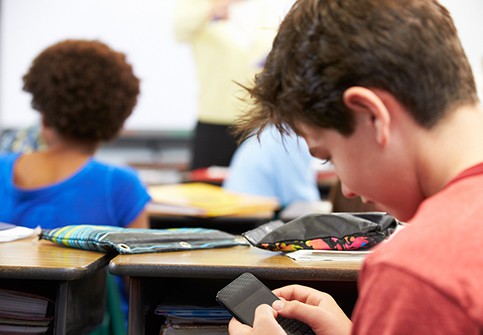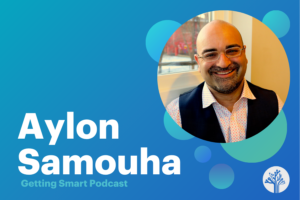How Mobile Learning Supports Student Growth and Ownership

Balance.
This is something that is missing from schools as they embark on digital transformation. Either the school is too focused on the technology for its own sake, or it is focused on using tech to do the same old work, replacing pixels for pencils, powerpoints for posterboards, google for libraries, and screens for paper, rather than engaging in real transformation.
The biggest obstacle to transformation is one of culture and rigid process. It takes a tremendous amount of energy and commitment to make decisions in the midst of incredibly challenging day to day demands, that promote a culture of transformation. Part of the problem is inertia. Part of the problem is the hyper-intense focus on test scores that has caused many schools to adopt a teach-to-the-test approach which doesn’t leave room for much in the way of student-centered learning.
I’ve been intrigued for some time with instructional approaches and pedagogies that simultaneously foster both increased academic achievement and non-cognitive skills. There are many ways to slice this concept, but for this purpose I find it illuminating to consider academic achievement and student ownership of their learning (self-direction) as balancing metrics that often seem to be in opposition to each other in the trade-offs they require in day to day work. However, it appears to be the case that in a transformative culture, both can be nurtured side by side and the tension between them keeps the school culture’s path on track, keeping it balanced.
I have been exploring the pedagogies that support intrinsic motivation and student ownership at the same time. To that end, I have begun a series of interviews with experts and practitioners of student-centered learning. This is one in a series of articles that shares what technology leaders have to say.
This interview is with Chris Dede, the Wirth Professor in Learning Technologies at Harvard discussing how mobile learning supports student growth and ownership. The video interview playlist can be found here, and a paraphrased summary is found below.
What is Mobile Learning?
Mobile Learning involves learning that happens any time, any place. It involves moving around, outside the school and the home. It enables situated learning due to the very nature of the mobile devices that are easy to always carry along. Whereas most districts that say they are, indeed, doing mobile learning they simply mean that they are using mobile devices. In practice, however, they are making those devices immobile, tethering them to school and/or home use.
The mobile pedagogy is situated learning, where the place that you are in is itself an important part of the learning experience. Whereas a classroom or a home may not be very interesting places to engage with for learning, ecological sites, historical sites, or commerce sites might create more interesting opportunities. And mobile devices open up new opportunities for situated learning that may not be possible with laptops or other devices that you can’t easily hold in your hand and move around with you.
Why is Mobile Learning important?
One of the big differences between Industrial era learning and 21st century learning as sketched out by the 2010 National Educational Technology Plan was the possibility of learning any place, any time. One of the challenges of 21st century learning is to get out of that “school box” using the mobile devices that let us walk out of it and into other experiences.
How does Mobile Learning support student ownership?
Young people now see their phone as an extension of themselves. If they see it as an extension of their learning, not just looking up information, entertainment, interacting socially, or doing work, then that deepens their sense of identity as a learner.
What does Mobile Learning look like in practice?
As an example, I have been working in Augmented Reality for a decade. The metaphor is one of the Terminator Robot that has magical eyes. It not only sees the real world, but also overlays and information that help it with decision making. We have developed a project, EcoMobile, where a mobile phone at a pond allows students to enjoy the pond itself, but also to see overlays to help them understand what is going on within that ecology.
History is another natural topic for Augmented Reality. There was a project in Washington DC where students can go to the hotel where there was an assassination attempt on Ronald Reagan and see those historical events play out in place through their devices.
What are some concerns about Mobile Learning?
It is important to consider the limitations of mobile learning. Although the devices have unique properties that allow specific types of learning to take place, we should be concerned when hardware vendors try to convince us that they are equivalent to laptops, which are far more powerful machines.
For more, check out:
- 10 Current Lesson Ideas for BYOD and BYOT
- Push Learning: How Smart Notifications Will Change Education
- Happify: The Science of Emotional Wellbeing in a Mobile App
Stay in-the-know with all things EdTech and innovations in learning by signing up to receive the weekly Smart Update.






0 Comments
Leave a Comment
Your email address will not be published. All fields are required.